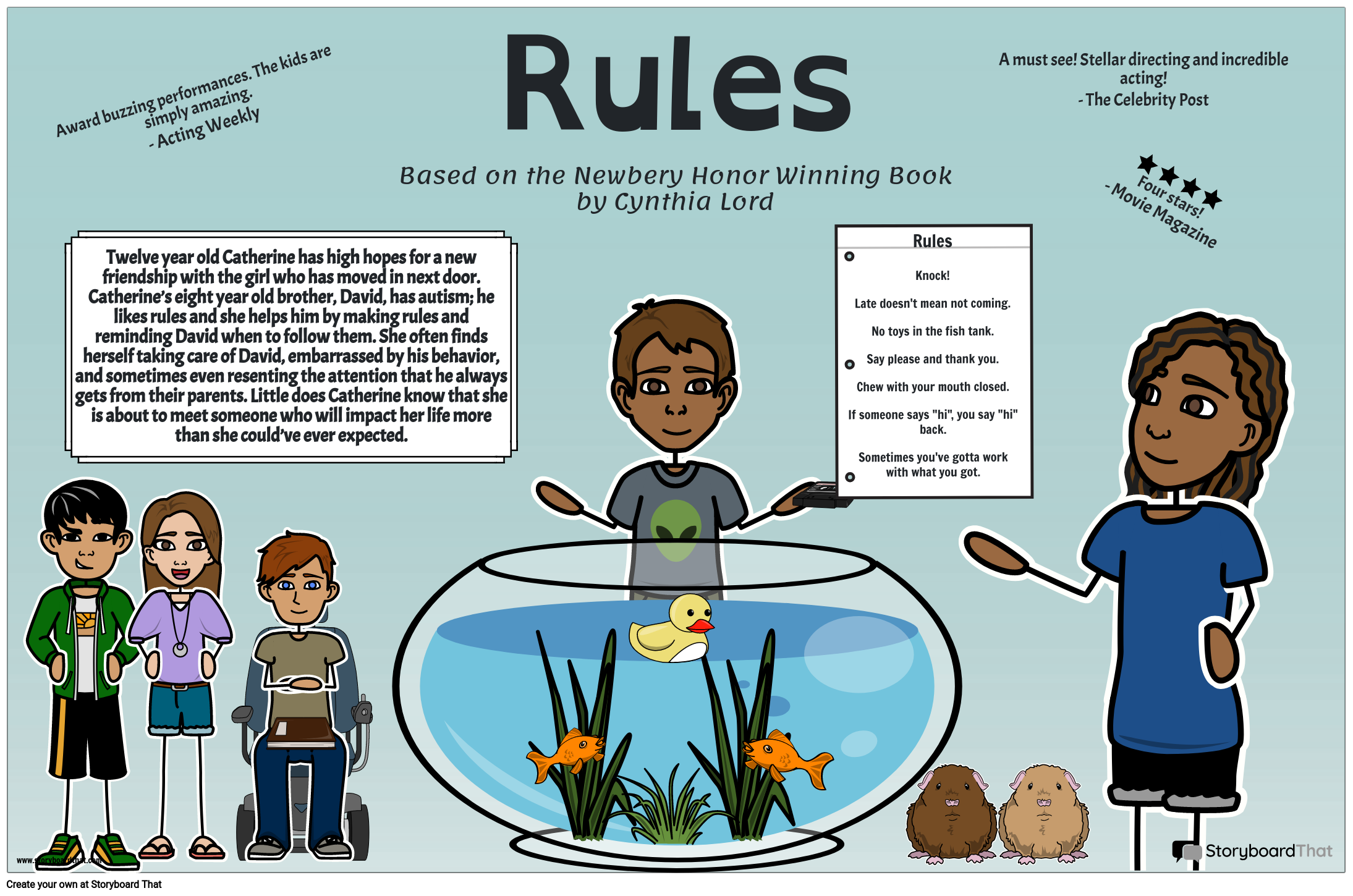Movie Rules: The Ultimate Guide To Mastering The Art Of Cinema
Ever wondered what it takes to make a movie that truly resonates with audiences? Movie rules are the unsung heroes of filmmaking, shaping everything from scriptwriting to editing. These rules aren’t just guidelines; they’re the lifeblood of cinema. Understanding them can elevate your movie-watching experience or even inspire you to create your own masterpiece. So, buckle up, because we’re diving deep into the world of movie rules movie rules!
In a world where blockbusters dominate the box office, it’s easy to overlook the intricate rules that govern the art of filmmaking. From the three-act structure to the rule of thirds, these principles ensure that movies captivate and engage us. Whether you’re a filmmaker, a film enthusiast, or just someone who loves a good story, understanding movie rules can transform the way you perceive films.
This article isn’t just another list of tips; it’s a comprehensive exploration of the principles that define the magic of cinema. We’ll break down the rules, explore their importance, and even throw in some fun trivia along the way. So, let’s get started and unravel the secrets behind the silver screen.
- Discovering The World Of Emmi Sellers A Journey Of Passion And Creativity
- Exploring Colton Harrismoores Net Worth The Infamous Barefoot Bandit
What Are Movie Rules Movie Rules Anyway?
Movie rules movie rules refer to the fundamental principles that guide the creation and execution of films. These rules encompass everything from storytelling techniques to visual composition. They’re like the blueprints of filmmaking, ensuring that every scene, character, and plot point serves a purpose.
Think of movie rules as the grammar of cinema. Just as proper grammar helps us communicate effectively, these rules help filmmakers convey their stories in a way that resonates with audiences. But here’s the kicker: while they provide structure, they also allow for creativity. Filmmakers often bend or break these rules to create something truly unique.
The Importance of Movie Rules in Filmmaking
Why do movie rules matter? Well, imagine watching a film where the plot jumps around randomly, the characters lack depth, and the visuals are all over the place. Chances are, you’d walk out of the theater feeling confused and unsatisfied. Movie rules prevent this from happening by providing a framework that keeps everything cohesive.
- Sabrina Banks Leak Unraveling The Controversy
- Karlye Taylor The Allure And Intrigue Behind The Karlye Taylor Nude Phenomenon
- They ensure a logical flow of events
- They help develop compelling characters
- They enhance visual storytelling
By adhering to these rules, filmmakers can craft narratives that captivate and engage audiences. But remember, rules are meant to be challenged. Some of the greatest films in history have defied conventions, proving that creativity knows no bounds.
Top 10 Movie Rules Every Filmmaker Should Know
Now that we’ve established the importance of movie rules, let’s dive into the top 10 rules that every filmmaker should have in their arsenal. These rules aren’t just for big-budget Hollywood productions; they apply to independent films and even short films. So, whether you’re shooting on a smartphone or a high-end camera, these principles will elevate your work.
Rule #1: The Three-Act Structure
The three-act structure is the backbone of most successful films. It divides the story into three distinct parts: setup, confrontation, and resolution. This structure provides a clear beginning, middle, and end, making it easier for audiences to follow the narrative.
- Act One: Introduce the characters and establish the conflict
- Act Two: Develop the conflict and raise the stakes
- Act Three: Resolve the conflict and provide closure
While some films experiment with nonlinear storytelling, the three-act structure remains a reliable foundation for crafting engaging narratives.
Rule #2: Show, Don’t Tell
This rule emphasizes the power of visual storytelling. Instead of relying on exposition to convey information, filmmakers should use visuals and actions to tell the story. This approach keeps audiences engaged and allows them to interpret the narrative on their own.
For example, instead of having a character explain their fear of water, show them hesitating to step into a pool or reacting with panic when they hear a splash. Visual storytelling is a powerful tool that can evoke emotions and create a more immersive experience.
Rule #3: The Rule of Thirds
The rule of thirds is a fundamental principle of visual composition. It involves dividing the frame into nine equal parts using two horizontal and two vertical lines. Placing key elements along these lines or at their intersections creates a more balanced and visually appealing image.
This rule is particularly important in cinematography, as it helps guide the viewer’s eye and enhance the overall aesthetic of the film. From framing shots to composing scenes, the rule of thirds ensures that every frame is visually pleasing.
Exploring the Psychology Behind Movie Rules
Movie rules aren’t just arbitrary guidelines; they’re rooted in psychology. Filmmakers use these rules to tap into the human psyche, creating experiences that resonate on a deeper level. Let’s explore some of the psychological principles that underpin movie rules.
The Power of Emotional Connection
One of the primary goals of filmmaking is to create an emotional connection with the audience. Movie rules help achieve this by providing a framework for developing relatable characters and compelling stories. When audiences emotionally invest in a film, they’re more likely to remember it long after the credits roll.
For instance, the use of music and sound design can evoke powerful emotions. A haunting melody or a sudden silence can create tension, while a triumphant score can inspire hope. These elements, guided by movie rules, enhance the emotional impact of a film.
The Role of Cognitive Load
Cognitive load refers to the amount of mental effort required to process information. Movie rules help manage cognitive load by simplifying complex narratives and making them easier to follow. By adhering to these rules, filmmakers ensure that audiences can fully immerse themselves in the story without getting overwhelmed.
For example, the use of clear visual cues and logical plot progression reduces the cognitive load on viewers, allowing them to focus on the emotional and thematic aspects of the film.
Breaking the Rules: When and How to Do It
While movie rules provide a solid foundation for filmmaking, they’re not set in stone. Some of the most groundbreaking films in history have defied conventions, proving that rules are meant to be broken. But how do you know when it’s okay to break the rules?
Understanding the Context
Before breaking the rules, it’s essential to understand why they exist in the first place. Breaking rules for the sake of it can lead to confusion and disengagement. However, when done thoughtfully and with a clear purpose, breaking the rules can result in innovative and memorable films.
For example, Quentin Tarantino’s nonlinear storytelling in "Pulp Fiction" challenged traditional narrative structures, yet it worked because it served the film’s overall theme of interconnectedness.
Experimenting with Style
Breaking the rules allows filmmakers to experiment with style and push the boundaries of cinema. This can lead to the creation of unique visual and narrative techniques that set a film apart from its peers.
Take David Lynch’s "Mulholland Drive," for instance. Its surrealist approach to storytelling defied conventional rules, yet it captivated audiences with its dreamlike quality and psychological depth.
Movie Rules in Action: Case Studies
To truly understand the impact of movie rules, let’s examine some real-world examples. These case studies highlight how filmmakers have successfully applied these principles to create iconic films.
Case Study #1: The Shawshank Redemption
"The Shawshank Redemption" is a masterclass in storytelling. It adheres to the three-act structure, developing its characters and plot with precision. The film’s use of visual symbolism, such as the recurring motif of hope, enhances its emotional resonance.
By following movie rules, "The Shawshank Redemption" creates a narrative that’s both engaging and deeply moving. Its success is a testament to the power of adhering to these principles while infusing creativity and passion.
Case Study #2: Inception
"Inception" is a prime example of how movie rules can be adapted to suit complex narratives. Director Christopher Nolan used the three-act structure to guide the audience through multiple layers of reality, ensuring that the story remained coherent despite its intricate plot.
By combining traditional rules with innovative storytelling techniques, "Inception" became a box office and critical success, proving that creativity and structure can coexist.
Common Misconceptions About Movie Rules
There are several misconceptions surrounding movie rules that can lead to confusion and misinformation. Let’s debunk some of these myths and clarify the true purpose of these principles.
Myth #1: Movie Rules Stifle Creativity
One of the most common misconceptions is that movie rules limit artistic expression. On the contrary, these rules provide a foundation that allows creativity to flourish. By understanding and mastering the rules, filmmakers can push the boundaries of cinema and create something truly unique.
Think of movie rules as a toolkit. The more tools you have at your disposal, the more creative you can be. It’s all about knowing when to follow the rules and when to break them.
Myth #2: Following Movie Rules Guarantees Success
While adhering to movie rules can increase the chances of success, it’s not a guarantee. Filmmaking is an art form, and success depends on a multitude of factors, including storytelling, character development, and production quality.
That said, understanding movie rules can give filmmakers a competitive edge by ensuring that their films are well-crafted and engaging. It’s just one piece of the puzzle, but an important one nonetheless.
The Future of Movie Rules
As technology continues to evolve, so too do the rules of filmmaking. Emerging technologies like virtual reality and artificial intelligence are reshaping the way stories are told, presenting new opportunities and challenges for filmmakers.
Embracing New Technologies
Virtual reality, for example, offers a immersive experience that traditional films can’t match. Filmmakers must adapt their rules to accommodate this new medium, focusing on creating interactive and engaging narratives that leverage the unique capabilities of VR.
Artificial intelligence, on the other hand, can assist filmmakers in areas like scriptwriting and visual effects, but it can’t replace the human touch. The future of movie rules lies in finding a balance between technology and creativity, ensuring that films remain authentic and emotionally resonant.
Conclusion: The Power of Movie Rules
In conclusion, movie rules movie rules are the backbone of filmmaking, providing the structure and guidance needed to create compelling narratives. From the three-act structure to the rule of thirds, these principles ensure that films captivate and engage audiences.
But remember, rules are meant to be challenged. By understanding and mastering these principles, filmmakers can push the boundaries of cinema and create something truly unique. So, whether you’re a filmmaker or a film enthusiast, embrace the power of movie rules and let them inspire your creative journey.
Now it’s your turn! Share your thoughts on movie rules in the comments below. Do you have a favorite film that defied conventions? Or perhaps a rule you think every filmmaker should follow? Let’s keep the conversation going and celebrate the art of cinema together.
Table of Contents
- What Are Movie Rules Movie Rules Anyway?
- The Importance of Movie Rules in Filmmaking
- Top 10 Movie Rules Every Filmmaker Should Know
- Exploring the Psychology Behind Movie Rules
- Breaking the Rules: When and How to Do It
- Movie Rules in Action: Case Studies
- Common Misconceptions About Movie Rules
- The Future of Movie Rules
- Conclusion: The Power of Movie Rules

Majority Rules (2024) AZ Movies

Rules Movie Poster Storyboard by lauren

10 Classic Horror Movie Rules That Are Still Being Followed Today